15% of modern global warming (ocean) can be attributed to geothermal heat fluxes through the sea floor that persistently heat the ocean.
Evidence of more than 100,000 formerly or currently active volcanic vents permeate the Earth’s sea floor (Kelley, 2017).
Active volcanoes spew 380°C sulfuric acid and “metal-laden acidic fluids” into the bottom waters of the world ocean on a daily basis. Literal ocean acidification is thus a natural phenomenon.
The carbon dioxide concentrations present in these acidic floods reach “astounding” levels, dwarfing the potential for us to even begin to appreciate the impact this explosive geothermal activity has on the Earth’s carbon cycle.
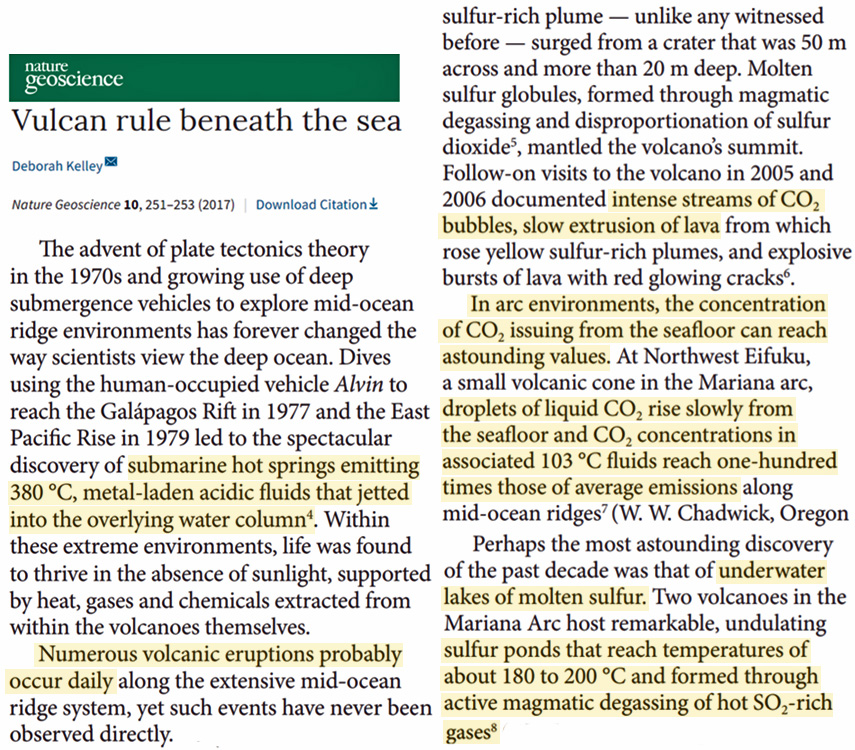
Image Source: Kelley, 2017
Geothermal heating warms up the last 2000 m of the global ocean “by about 0.3°C to 0.5°C” (Emile-Gaey and Madec, 2009). The heat fluxes are systemically positive, span “the entire seafloor,” and the circulation is largely horizontal at these depths. Horizontal circulation allows the bottom waters “to feel the influence of geothermal heating for a long time.”
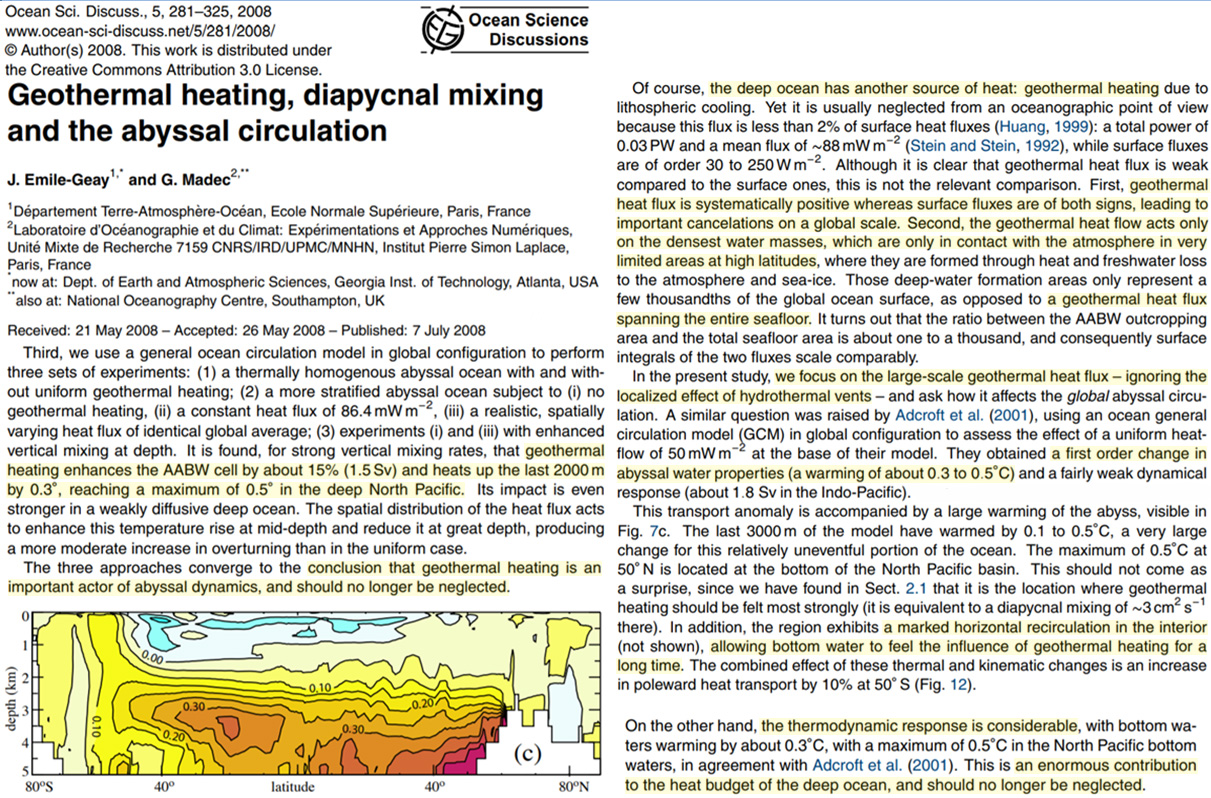
Image Source: Emile-Gaey and Madec, 2009
The rapidity of temperature changes near geothermal sources can be profound. Geothermal heating can induce warming rates of 0.02°C per year, or 0.2°C per decade, offsetting the abrupt (~0.25°C per year) cooling from “cold-seawater intrusions” (Becker et al., 2021).
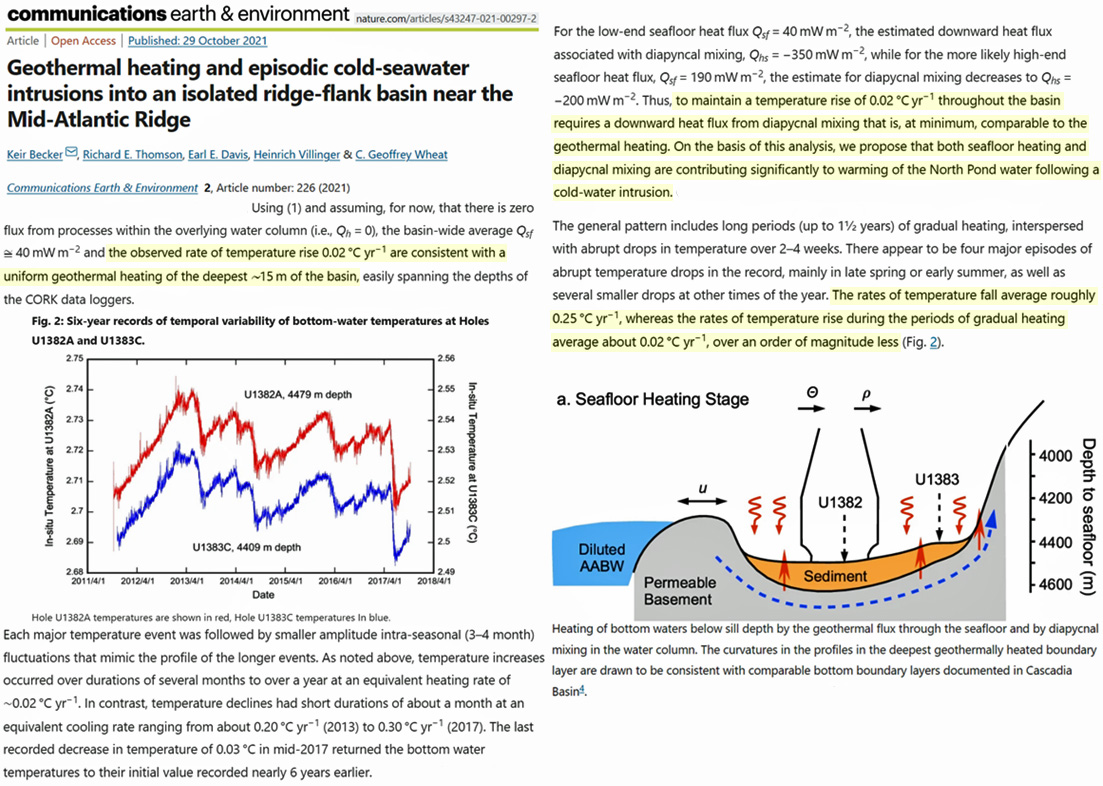
Image Source: Becker et al., 2021
Approximately 15% of modern global warming (ocean) can be attributed to geothermal heat fluxes through the sea floor that “persistently heat the ocean” (Gebbie, et al., 2021). The value attained for geothermal heating of the ocean, 87 mW/m², is similar to that which is required to end a glacial period (melt ice sheets) and transition into an interglacial.
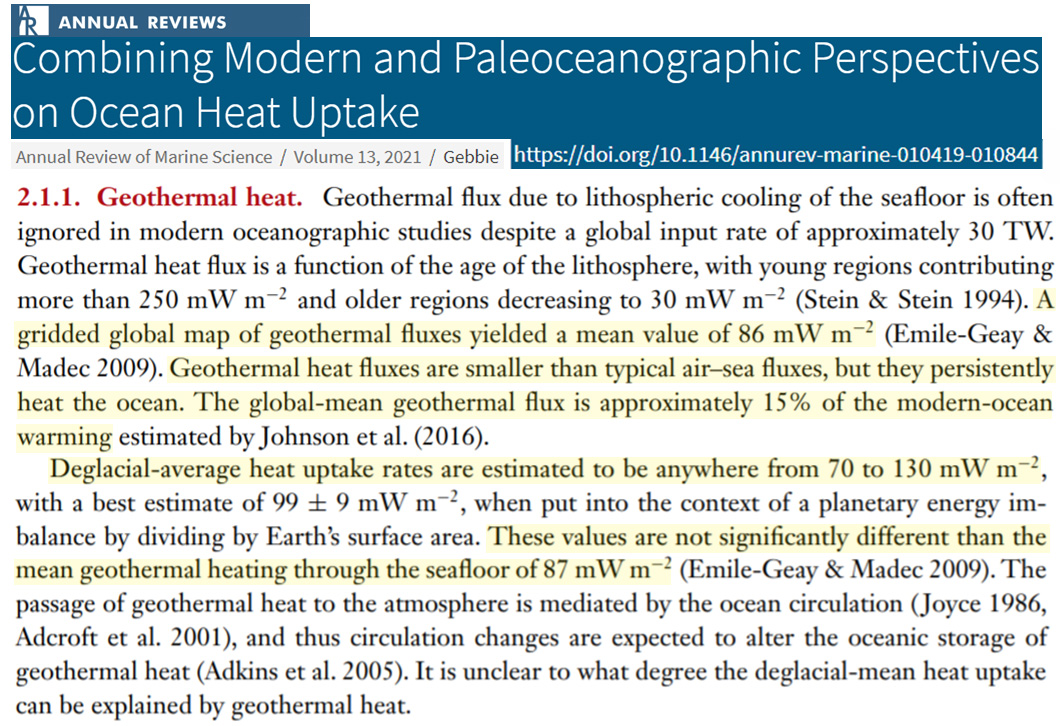
Images Source: Gebbie, 2021
Considering the ocean bottom waters warmed up 2°C from 19,000 to 17,000 years ago about 1,000 years before the surface warmed and CO2 began rising (Stott et al., 2007), geothermal heat fluxes could potentially explain a large portion of glacial-interglacial transitions – as well as millennial-scale global ocean temperature changes.
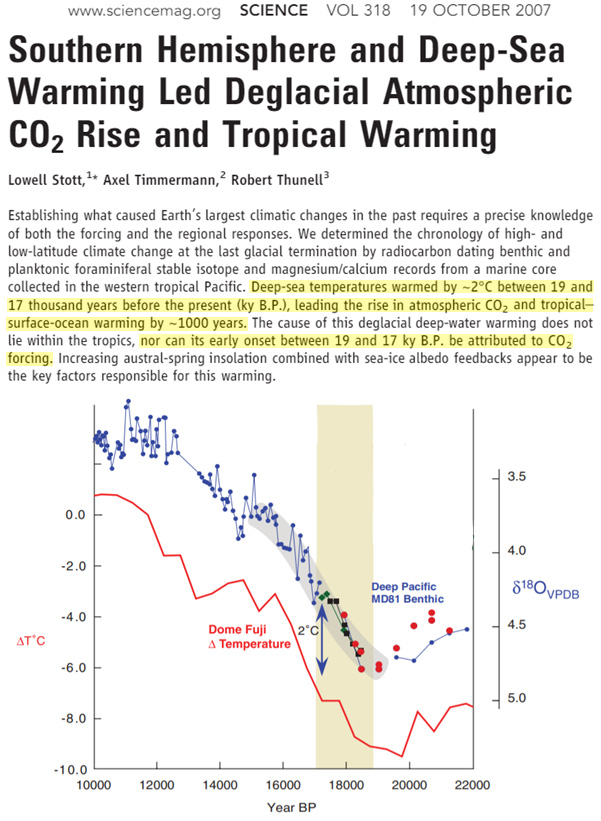





Geothermal heat is highly variable both in time (volcanic eruptions) and space (geothermal areas). Estimates of an average have a great degree of uncertainty. Thirty ears ago the estimated average over the globe was 70mW/m2, today it is closer to 100mW/m2. Negligible in comparison to the average solar energy contribution about 340W/m2.
[…] An ‘Enormous Contribution’ To Earth’s Energy Budget Arises From Bottom-Up Geotherm… […]
Does “bottom up” really mean “arse up”?
Geothermal heats and adds CO2 to deep water which has a millennial time lag before anything happens at the surface. So, it’s important at that time scale.
If increased plate tectonic activity and sea floor heat influx at oceanic plate margins could be tied to gravitational effects from orbital eccentricity there would be a way of correlating the incidence of interglaciations to the 100k periodicity they exhibit (in conjunction, perhaps, with the variation of Insolation).
Interesting thought, E.U.